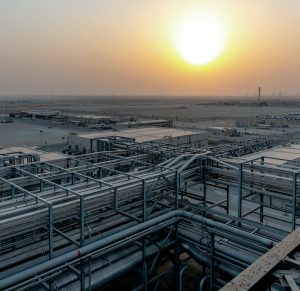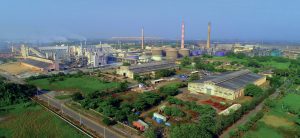
Middle East sulphur
The Middle East remains the world’s largest regional exporter of sulphur, with additional capacity continuing to come from both refineries and particularly sour gas processing.

The Middle East remains the world’s largest regional exporter of sulphur, with additional capacity continuing to come from both refineries and particularly sour gas processing.

Kazakh state gas company QazaqGaz says that work is progressing well and on schedule on the 1 billion m3 expansion project at the Kashagan Gas Processing Plant. A recent site report says that seven absorption columns have been installed at the sulphur treatment unit (each weighing between 50-170 tonnes); three sections of the smokestack have been installed at the sulphur recovery block, along with storage tanks and pumps for the heat carrier, instrumentation air, and nitrogen supply units; and a total of 2,177 t of process equipment has been installed. Welding works for tank assembly are ongoing, and over 12,000 meters of underground piping have been laid, and more than 38,000 cubic meters of concrete have been poured.

The Middle East’s premier event for the sulphur global industry, MEScon 2025, returns to the Conrad Abu Dhabi, Etihad Towers from 19 to 22 May 2025.

Kuwait’s state owned Kuwait Oil Company (KOC) has issued a tender for companies to bid on construction of the second phase of its gas sweetening facility at booster station BS 171 in West Kuwait. Thirty-two companies have been pre-qualified to bid for the $390 million engineering procurement and construction (EPC) contract for the project. Phase II will involve the construction of two processing trains, each with a capacity to produce 60 million scf/d of sales gas from sour gas with an H2S content of 4%. Sulphur recovery from the project will come from two separate 100 t/d trains with a total capacity of 65,000 t/a of molten sulphur.

Chevron says that its 50% owned affiliate Tengizchevroil LLP (TCO) has started oil production at its Future Growth Project (FGP) located at the Tengiz oil field in Kazakhstan. FGP is the third processing plant in operation at the Tengiz oil field, which expands sour gas injection capability and is expected to ramp up output to 1 million bbl/d. This milestone follows the completion of the Wellhead Pressure Management Project (WPMP) in 2024, which is designed to optimise the field and processing plants. The FGP expansion aims to increase crude oil production by 260,000 bbl/d at full capacity.

The Abu Dhabi National Oil Company (ADNOC) has launched a tender for the expansion of offshore gas production at its Satah Al Razboot (SARB) field, part of the Emirate’s huge Ghasha concession. The scope of work will include the engineering, procurement, and construction (EPC) of at least two wellhead platforms with multiple related facilities and the installation of a 24” subsea gas pipeline to new inlet facilities at Das Island. The project will also include brownfield tie-ins at Al Qatia, Bu Sikeen Islands, Das and Zirku and Arzanah Islands.

TotalEnergies and its partners Basra Oil Company and QatarEnergy have begun construction works at ArtawiGas25, a processing facility for the associated gas from the Ratawi field, located in the Basra region. The facility, part of the Gas Growth Integrated Project (GGIP), represents an investment of around $250 million and will process 50 million scf/d of gas which would previously have been flared. The gas will supply local power plants, covering the demand of approximately 200,000 households in the Basra region. The GGIP project is a $10 billion project designed to enhance the development of Iraq’s natural resources and improve the country’s electricity supply. It includes a large-scale gas processing plant, with a first phase of 300 million scf/d that will recover gas being flared on three oil fields and supply gas to 1.5 GW of power generation capacity.

Russian media reports suggest that a large scale Ukrainian drone strike on February 3rd attacked a number of oil and gas processing facilities, including Gazprom’s Astrakhan Gas Processing Plant. Video of the site showing fires burning were posted to social media. Astrakhan is one of the largest sulphur producing sites in Russia, with an output of around 3.5 million t/a in 2024. The Moscow Times reported that production had been shut down at the site, and would likely remain so for “several months”.

Building on the success of its previous conferences, SulGas Mumbai 2025 brought together 154 sulphur and gas treating stakeholders, representing 68 companies for its 7th technical forum in the Indian subcontinent. We report on some of the key topics on the agenda.

A complete listing of all articles and news items that appeared in Sulphur magazine during 2024.